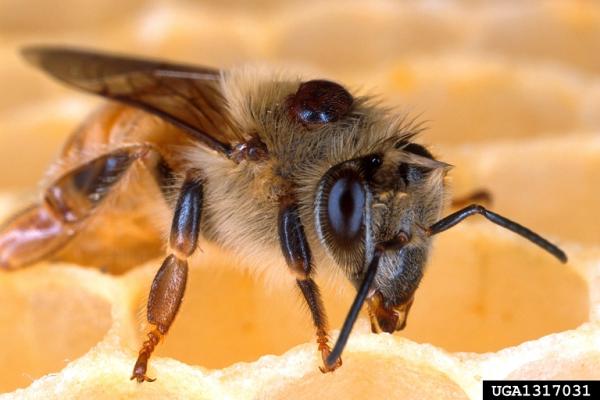Varroa destructor (Anderson & Trueman, 2000)
Varroa mite, honey bee varroa mite
First detected in Asia (Anderson & Trueman, 2000)
1987 (Rosenkranz et al. 2010)
Commercial transportation of infested bee colonies (Dietemann et al. 2012)
Most serious worldwide pest of the European honey bee (Apis mellifera) and a major cause of colony collapses (Anderson and Trueman 2000; Rosenkranz et al. 2010)

European honey bee with a Varroa mite on it's back; mite causes death and disease in bee colonies.
Photo by Scott Bauer; USDA, Agricultural Research Service
Find more images
Spotlights
All Resources
Selected Resources
The section below contains highly relevant resources for this species, organized by source.
Partnership
Federal Government
International Government
State and Local Government
Academic
Anderson, D.L., and J.W.H. Trueman. 2000. Varroa jacobsoni (Acari: Varroidae) is more than one species. Experimental & Applied Acarology 24(3):165-189.
Dietemann, V., et al. 2012. Varroa destructor: research avenues towards sustainable control. Journal of Apicultural Research 51(1):125-132.
Rosenkranz, P., P. Aumeier, and B. Ziegelmann. 2010. Biology and control of Varroa destructor. Journal of Invertebrate Pathology 103:S96-S119.
